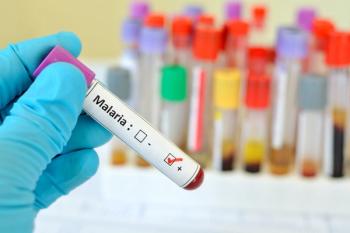
Vaccine Coverage Among Kindergartners Continues Decline in 2024-2025 School Year
Key Takeaways
- Kindergarten vaccination rates for DTaP and MMR have decreased, contributing to disease outbreaks like measles and whooping cough.
- Vaccine exemptions among kindergartners are increasing, with 17 states reporting exemption rates over 5%.
Continuing a trend observed since the end of the COVID-19 pandemic, vaccine coverage among kindergartners declined in the 2024-2025 school year, according to CDC data.
Fresh data released by the CDC indicate a sustained decline in vaccination coverage among kindergartners in the US for all reported vaccines in the 2024-2025 school year, a decline that began with the major disruptions brought on by the COVID-19 pandemic and one that continues trends observed in data from the 2023-2024 school year.1,2
DTaP, MMR Vaccine Coverage Both Decrease Among Kindergartners
Drops in coverage were observed across numerous vaccines. For the diphtheria, tetanus, and acellular pertussis (DTaP) vaccine, coverage among kindergartners was 92.1%, a slight decrease from 92.3% in the 2023-2024 season and 92.7% in the 2022-2023 season. Furthermore, for the measles, mumps, and rubella (MMR) and polio vaccine, coverage fell to 92.5%, a drop from 92.7% and 93.1% in the 2023-2024 and 2022-2023 school years, respectively.1,2
Any reductions in MMR or DTaP vaccination coverage could be detrimental for patients impacted by the covered diseases, while allowing for gaps that can be exploited by the targeted diseases and cause significant rates of spread, especially among unvaccinated individuals. This year, a measles outbreak stemming from unvaccinated individuals in Texas has grown to over 800 cases in the US, with a true case number likely higher. In addition, over 35,000 cases of whooping cough—which hospitalizes a third of infants who contract the illness—were reported in 2024, a number 6 times as high as those in 2023.1,3
Concerningly, the number of kindergartners attending school without documentation of completing a full MMR vaccine series continues to increase. This population was measured at 286,000 during the 2024-2025 school year, a slight increase from around 280,000 in the 2023-2024 school year. Accordingly, the number of children receiving an exemption from 1 or more vaccines was 137,938, an increase of 11,191 children from the prior year (n = 126,747).1,2
Increases in exemptions from 1 or more vaccines among kindergartners were reported in 36 states and the District of Columbia. Concerningly, 17 states reported exemptions over 5%, including Idaho at 15.4%, Utah at 10.3%, and Oregon at 9.8%. As individuals forge ahead from the emergency phase of the COVID-19 pandemic—with many harboring high levels of vaccine hesitancy and distrust of public health institutions due to their experiences—the real-world impacts are being felt in the form of a continued increase in vaccine exemptions, incomplete vaccine series, and spread of serious disease.1,2
Role of Pharmacists Amid Challenging Time for Vaccine Acceptance
Amid these decreases in kindergarten vaccination coverage, myriad changes are being recommended and implemented by new leadership at the CDC, FDA, and Department of Health and Human Services, led by Secretary Robert F. Kennedy Jr. In the span of a few weeks, the department announced a slate of new initiatives encompassing COVID-19 and influenza vaccines, including restricting future COVID-19 vaccine recommendations only to adults and high-risk groups; no longer recommending that healthy children and pregnant women receive the COVID-19 vaccine; and mandating the removal of thimerosal in all US influenza vaccines, an agent that has had little presence in such vaccines for decades.1,3-6
With so much change surrounding vaccine guidance and an immense flow of information—and misinformation—from myriad sources, pharmacists play an outsized role in providing clear, evidence-based counseling and education to parents and guardians who may have questions about vaccinating their child. Pharmacists are key players in communicating the immense risk that children who are unvaccinated face of severe illness due to measles, whooping cough, or any of the other serious diseases targeted by these vaccines.
A particular risk exists when children who are unvaccinated attend school, with the possibility that the child unknowingly harbors a serious illness that could rapidly spread throughout the classroom. Simultaneously, sending an unvaccinated child to school puts the child itself at immense risk, as they are at heightened risk to contract a disease that a vaccinated child may carry and be unimpacted by. Pharmacists should ensure they compassionately explain the concerns to parents regarding sending their unvaccinated children to school and ensure they are offered options for vaccinating their child.
REFERENCES
1. CDC—SchoolVaxView. Vaccination coverage and exemptions among kindergartners. Published July 31, 2025. Accessed July 31, 2025. https://www.cdc.gov/schoolvaxview/data/index.html
2. Halpern L. New CDC data show decrease in vaccine coverage among kindergarteners for 2023-2024 school year. Pharmacy Times. Published October 4, 2024. Accessed August 4, 2025. https://www.pharmacytimes.com/view/new-cdc-data-show-decrease-in-vaccine-coverage-among-kindergarteners-for-2023-2024-school-year
3. Gerlach A. Amid the ongoing measles outbreak, cases of whooping cough are on the rise. Pharmacy Times. Published April 22, 2025. Accessed August 4, 2025. https://www.pharmacytimes.com/view/amid-the-ongoing-measles-outbreak-cases-of-whooping-cough-are-on-the-rise
4. Halpern L. FDA to restrict future COVID-19 vaccine recommendations to older adults, high-risk groups. Pharmacy Times. Published May 21, 2025. Accessed August 4, 2025. https://www.pharmacytimes.com/view/fda-to-restrict-future-covid-19-vaccine-recommendations-to-older-adults-high-risk-groups
5. Halpern L. CDC to end COVID-19 vaccine recommendation for healthy children, pregnant women. Pharmacy Times. Published May 27, 2025. Accessed August 4, 2025. https://www.pharmacytimes.com/view/cdc-to-end-covid-19-vaccine-recommendation-for-healthy-children-pregnant-women
6. Gerlach A. Department of Health and Human Services announces removal of thimerosal from all US flu vaccines. Pharmacy Times. Published July 24, 2025. Accessed August 4, 2025. https://www.pharmacytimes.com/view/department-of-health-and-human-services-announces-removal-of-thimerosal-from-all-us-flu-vaccines
Newsletter
Stay informed on drug updates, treatment guidelines, and pharmacy practice trends—subscribe to Pharmacy Times for weekly clinical insights.













































































































































































































